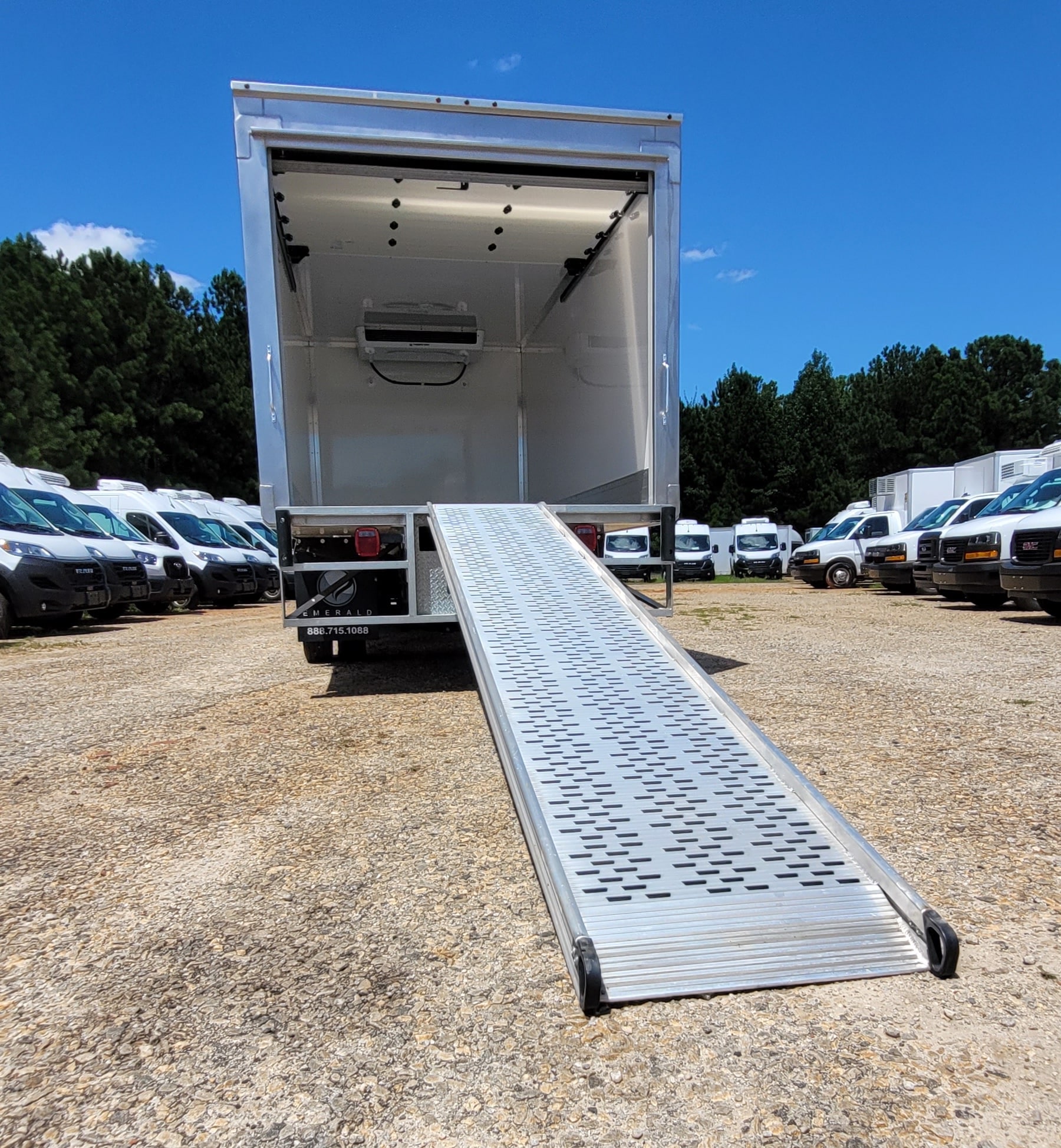
How To Transport Food Safely
Joe Dickman | October 3rd, 2022
When transporting food, it is essential to take the necessary precautions to ensure that it arrives at its destination safe and sound. This blog post will discuss three tips that will help you transport food safely. Whether using a refrigerated truck, a reefer box truck, or a freezer box truck, these tips will help keep your food fresh and protected from bacteria growth.
Tip 1: Keep your food refrigerated or frozen
If you are transporting refrigerated or frozen food, it is crucial to keep it at the proper temperature. Improper temperatures can cause foods to thaw and arrive at a destination spoiled and under improper care. The temperature of a refrigerated truck typically ranges from 33 and 40 degrees Fahrenheit, while a freezer box truck is 0 to 32 degrees Fahrenheit. At Emerald Transportation Solutions, we have many refrigerated vehicles to choose from. From refrigerated catering vans to all-electric trucks, we can supply just what you need to transport your foods or beverages. We want your food to be transported in proper condition.
Tip 2: Protect your food from contamination
When transporting food, it is vital to keep it away from potential sources of contamination. This means keeping raw meat, poultry, and seafood away from other food items. When transporting your foods, please remember that different foods should not be together because of the diseases that can transfer from raw food to other sources. Healthline states this cross-contamination could cause nausea, headache, or loss of appetite. Consider the condition of your food before you eat it.
Tip 3: Sanitize Your Transportation Source
Be sure to clean and sanitize your refrigerated truck before transporting food. This sanitation includes checking the area for mold or other foreign bacteria. This inspection will help prevent the spread of bacteria and other contaminants. You should also wash your hands thoroughly before handling any food items. You don’t want foreign bacteria or chemicals to contaminate your food.
Tip 4: Inspect your food before you eat it
Once you have transported your food to its destination, it is vital to inspect it before eating it. Looking for signs of spoilage, such as mold or discoloration, is an excellent way to check spoilage. If you are unsure whether or not your food is safe to eat, it is always better to err on the side of caution and throw it away.
By following these three tips, you can help ensure that your food arrives at its destination safely. Remember, it is better to be safe than sorry regarding food safety. If you have doubts about whether your food is safe, it is always best to throw it away.
Related Articles
Contact Us
Feel Free To Contact Us If You Have Any Questions
What does under DOT mean?
Questions regarding DOT requirements come up often. 10,000 lbs GVW (gross vehicle weight) and over are commercial vehicles that fall under the Department of Transportation regulatory requirements.
What is the difference between GVW and payload?
GVW or Gross Vehicle Weight is the entire weight of the vehicle including the payload. The payload weight represents the amount of cargo you are hauling.
What is a self-powered unit and a vehicle-powered unit?
A self-powered unit has its own fuel source and will run independent of the truck. This is the heaviest and most expensive option. While vehicle-powered units run off the engine via a compressor mounted on the engine. These are less expensive and lighter in weight but you must run the truck or plug the electric standby into shore power.
What does K-factor mean and why is that important?
K-factor is a term that stands for the overall insulating value of the container (truck body). Quite simply the lower the K-factor the better the truck body will be able to maintain a given temperature and require less energy to do so.
How much lighter is a Poly Van vs a US spec body?
Poly Van bodies are very light. On average we estimate we are 75-150 lbs per foot lighter than a traditional sheet and post foamed in place body. These weight savings translates to less fuel burn and less CO2 emissions, along with added payload, the most important benefit.






